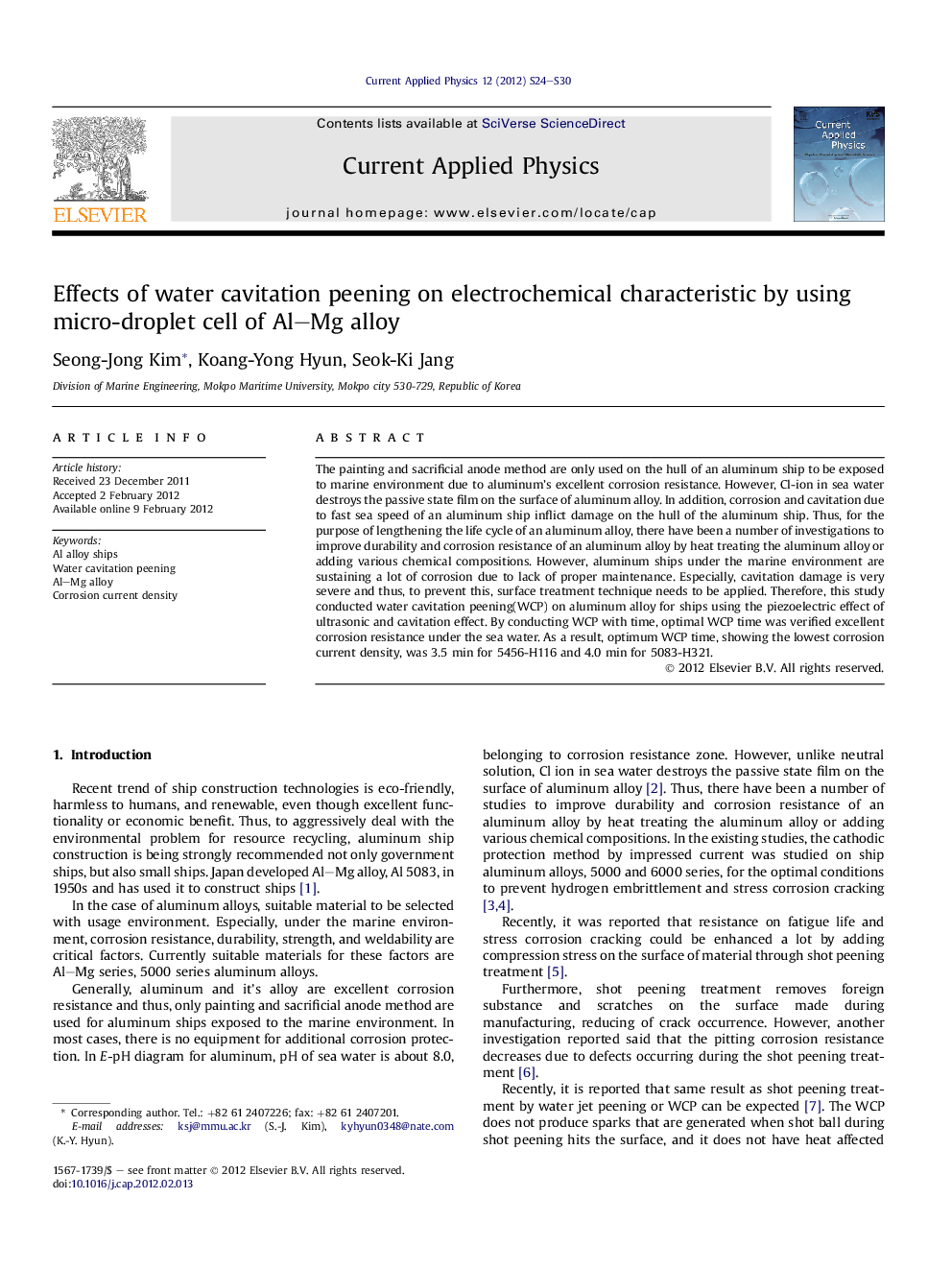| Article ID | Journal | Published Year | Pages | File Type |
|---|---|---|---|---|
| 1787193 | Current Applied Physics | 2012 | 7 Pages |
The painting and sacrificial anode method are only used on the hull of an aluminum ship to be exposed to marine environment due to aluminum’s excellent corrosion resistance. However, Cl-ion in sea water destroys the passive state film on the surface of aluminum alloy. In addition, corrosion and cavitation due to fast sea speed of an aluminum ship inflict damage on the hull of the aluminum ship. Thus, for the purpose of lengthening the life cycle of an aluminum alloy, there have been a number of investigations to improve durability and corrosion resistance of an aluminum alloy by heat treating the aluminum alloy or adding various chemical compositions. However, aluminum ships under the marine environment are sustaining a lot of corrosion due to lack of proper maintenance. Especially, cavitation damage is very severe and thus, to prevent this, surface treatment technique needs to be applied. Therefore, this study conducted water cavitation peening(WCP) on aluminum alloy for ships using the piezoelectric effect of ultrasonic and cavitation effect. By conducting WCP with time, optimal WCP time was verified excellent corrosion resistance under the sea water. As a result, optimum WCP time, showing the lowest corrosion current density, was 3.5 min for 5456-H116 and 4.0 min for 5083-H321.
